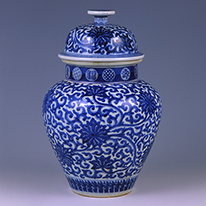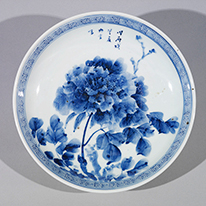Past Exhibitions
- Feature Exhibition: Kameyama Ware; Blue-and-White Ceramics of Nagasaki
- October 15, 2016 - November 27, 2016
In the year 1807, the Kameyama kiln opened on the side of Mt. Kazagashira, overlooking Nagasaki Harbor. It soon became famous for its Chinese-style porcelains with underglaze painted decoration in brilliant cobalt blue. Though this kiln lasted only fifty years, it produced a broad range of ceramics, everything from dishes for the everyday table to writing implements such as inkstones or water-droppers.
This feature exhibition, drawn from the collections of the Nagasaki Museum of History and Culture and the Kyushu Ceramic Museum, is being offered in conjunction with the special exhibition Sakamoto Ryōma: Japan’s Favorite Hero. Kameyama ware ceramics were being made in Nagasaki at the same time that Ryōma was living and working there, and he certainly must have used them in his own daily life.
- Ceramics of Japan and East Asia
- October 15, 2016 - November 27, 2016
Traditionally, ceramics has been an applied art, not only for viewing but also used as dishware or everyday furnishings, and is a familiar part of our surroundings. Ceramics produced in East Asia in particular vary widely in terms of pattern, form, and color, and are used for an extraordinarily wide range of applications. Works from different production sites are made with different materials, such as earthenware or porcelain, and have strongly distinct character depending on the variety of clay, glaze materials, ornamentation, firing technique and so forth. Here we present a variety of ceramics primarily from Japan, China, and the Korean Peninsula, along with explanations of their distinctive qualities and unique appeal.













